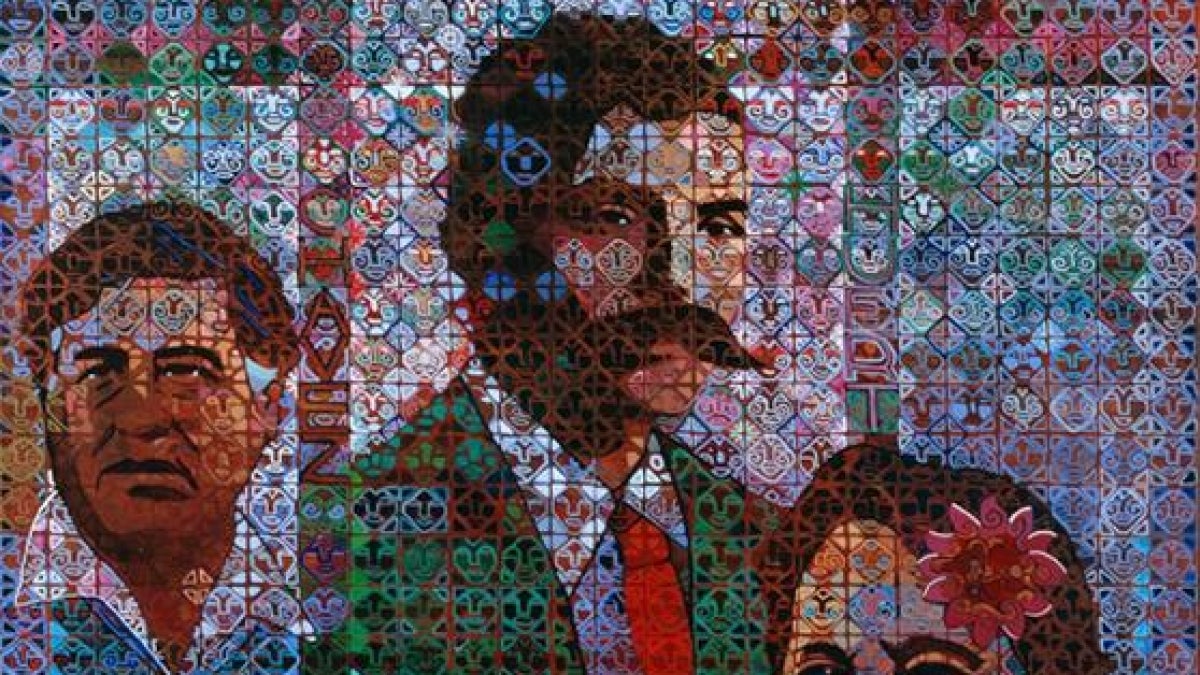ASU center 'mixes it up' with virtual art exhibit honoring National Hispanic Heritage Month

"The Return to Aztlan," Alfredo Arreguín. Oil on canvas, 2005. Image courtesy of the Hispanic Research Center.
The Hispanic Research Center at Arizona State University is home to an extensive collection of work by Hispanic artists. Over the years, the center has showcased this collection through a variety of in-person art shows, exhibitions and tours. Now, for the first time in its 35-year history, the center has launched a virtual art exhibit highlighting the work of artists of Mexican descent.
Founded in 1985, the Hispanic Research Center is a research unit of The College of Liberal Arts and Sciences that serves the university and broader community through its academic exploration and distribution of resources in areas of importance to Hispanic culture.
Jean Andino, interim director of the Hispanic Research Center and associate professor in the School for Engineering of Matter, Transport and Energy, said center staff were motivated to find new and engaging ways to make artwork from their collection accessible.
“Obviously in this time of COVID-19 things are a little bit different than they normally would be,” Andino said. “But we're so excited about the possibility of doing a lot more with the community and I’m encouraged by the enthusiasm that exists within the team.”
The virtual tour, titled “Mixing it Up,” features 12 videos narrated by Santiago Moratto, senior research specialist, and produced by Brandon Ortega, media specialist. In each video, Moratto gives a brief description of the work and shares context about the artist and subject matter. The exhibit showcases 10 pieces from the collection that were specially selected to celebrate and honor National Hispanic Heritage Month.
Each artwork depicts themes involving United States’ Hispanic identity including immigration, spirituality, traditional food and drink, and farmworker iconography. These themes are meant to provoke thought and discussion of social issues that are prevalent in present U.S. society.
Andino said “Mixing it Up” is the first of many virtual art exhibits, with plans to curate more in the coming months. Aside from virtual art exhibits, the center is involved in a number of other projects across the university. With the recent passing of Gary Keller, the center’s longtime director, Andino was appointed interim director. She said she and the team remain determined to move ongoing projects forward while expanding the center’s reach.
“Ultimately, when we start talking about social justice and social equity, it's crucial to have organizations that are able to speak to the needs of the community,” Andino said. “The Hispanic Research Center has the ability to bring diverse voices into the discussion and if you're trying to develop solutions for society, it's important to have all voices represented. We're always looking for new ideas and new opportunities to do collaborative work that will really impact the Hispanic community and the community in general.”
One of the center’s largest efforts is the Bilingual Press, a publisher that has produced literary works, scholarship and art books by or about Hispanics in the U.S. since 1973. The Bilingual Press has a catalog of 200 books authored by both established and emerging writers in English, Spanish and bilingual formats.
In addition to the Bilingual Press, the center also leads the Western Alliance to Expand Student Opportunities, a regional alliance of community colleges, four-year colleges and universities that seeks to expand opportunities for students in Arizona, Colorado and Utah. The program specifically focuses on enhancing and diversifying student inclusion in science, technology, engineering and mathematics (STEM).
As an Afro-Latina woman in STEM, Andino said she feels passionate about the center’s work and hopes its efforts will lead to creating a more culturally diverse, accepting community.
“It’s critically important to have an organization like the Hispanic Research Center that is meant to provide some additional knowledge, especially in this day and age, so that we can all better understand how to interface with each other. The Hispanic population is such a diverse group of individuals — the center represents these different cultures and allows their voices to be heard.”
More Arts, humanities and education

March Mammal Madness hypes science, storytelling in the classroom and beyond
In classrooms throughout the country, the buzz around March Mammal Madness starts long before the tournament begins. For…

Different ways of thinking, different ways of thriving: How ASU is supporting students with autism
According to the CDC, over 5.4 million adults in the U.S. are living with autism spectrum disorder, a condition that affects…

Forever sewn in history
The historical significance of Black influence on fashion spans centuries. From the prints and styles of Africa to various…